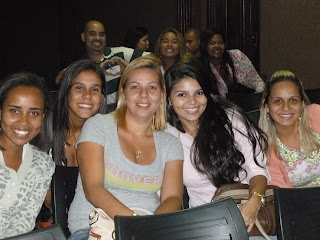Este trabalho resume o potencial de professores e alunos do curso de ADM UNISUAM:
Summary
Text The Discipline of Innovation Peter Drucker
Camila
de Oliveira Alves
Prof.
Paulo Del Peloso, M.Sc.
Innovation is the job of knowing rather than doing,
that can and should be managed like any other business function. But that does
not mean it is the same as other commercial activities.
Astute managers will ensure that their organizations
maintain a clear focus in all seven areas of opportunity for innovation, but
this is not enough, because after identifying an attractive opportunity, you
still need to take a leap of imagination to get the call "Functional
inspiration." What all successful entrepreneurs have in common is not a
personality, but a commitment to the systematic practice of innovation.
The base of entrepreneurship is the systematic
practice of innovation, but today, there is much confusion about the proper
definition of entrepreneurship, which refers not to the size of a company or
its age, but to a certain type of activity. When the activity is innovation:
Efforts are focused on creating a purposeful change, focused on the potential
of an economic or social enterprise.
Sources of Innovation
There are four areas of opportunity for innovation
within a company or industry, they are: unexpected occurrences, incongruities,
process needs, and industry and market changes.
There are three additional sources of opportunity
outside the company in its social and intellectual environment: demographic
changes, changes in perception, and new knowledge.
1nd. Unexpected occurrences: Considered the easiest
and simplest source of innovation opportunity.
2nd. Inconsistencies: A mismatch between expectations
and results can also open up possibilities for innovation.
3rd. Process requirements: Produces opportunity for
innovation exploiting the need of the process.
4th. Industry and market changes: This change creates
a tremendous opportunity for innovation. In fact, when there is change in the
market or industry, traditional leaders tend to neglect the market segments of
rapid growth. New opportunities rarely fit the way the industry has always
approached the market, defined it, or organized to serve. Innovators therefore
have a good chance to be alone for long.
5th. Demographic Changes: From external sources of
innovation opportunities, demographics is the most reliable. Demographic events
have their deadlines known. In fact, the opportunities for innovation made
possible by changes in the numbers of people and their age distribution,
education, occupation, and geographic location are among the most rewarding and
least risky in the business activities.
6th. Changes in perception: "The glass is half
full" and "glass is half empty" are descriptions of the same
phenomenon, but have very different meanings. Change the perception of a
manager of a glass half full to half empty opens up big opportunities for
innovation. What determines whether people see a glass half full or half empty
is the humor, and a change in mood often defies quantification. It's concrete.
It can be set. Can be tested. And that can be exploited for innovation
opportunity.
7th. New Knowledge: This is how knowledge-based
innovation always works. It can be difficult, but the knowledge-based
innovation can be managed. Success requires a careful analysis of the various
types of knowledge necessary to make innovation possible, but knowledge-based
innovation is more market than any other type of innovation.
Principles of Innovation
Innovation starts with purposeful systematic analysis
of the sources of new opportunities. But whatever the situation, innovators
must consider all sources of opportunity. They work out that analyzing the
innovation has to be to satisfy an opportunity. Then they go out to observe
potential users to study their expectations, their values and their needs.
Above all, innovation is work rather than genius. This
requires knowledge. It often requires ingenuity. And it requires focus. There
are clearly people who are innovating more talented than others, but their
talents be in well-defined areas. To be effective, an innovation has to be
simple and focused.













.JPG)




.JPG)



